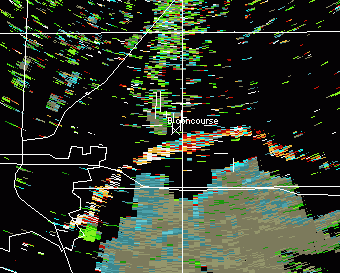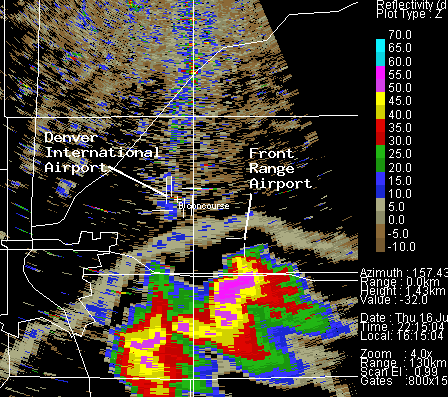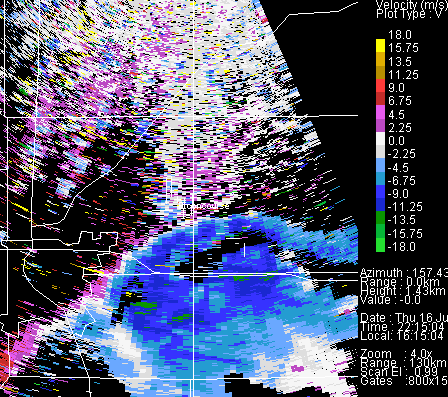ZDR patterns in a fine line


Conceptual Summary


The ratio of horizontal cross section / vertical cross section is generally much larger for flying insects than it is for falling raindrops. Since differential reflectivity () is the based on the ratio of the horizontal / vertical returned power levels, insect echoes typically have larger positive values than rain echoes. This contrast is often seen at low heights in the vicinity of convective showers. Cold air outflow from such showers sweeps the insects away from the precipitation cores. The spatial concentration of insects is maximized in the converging wind fields at the leading edge of the cold outflow; enhancing the reflectivity. However, due to their distinctly positive values, warm season thunderstorm outflow boundaries are often more apparent in the field than in the conventional reflectivity field.
During the gust front passage shown in the animated sequence above, The METAR reports from Denver International Airport (KDEN) showed a surface wind shift at 2227 UTC. In the last report before the wind shift (2153 UTC), the winds were from 040 degrees at 14 knots. After the fine line passage, the winds were from 180 degrees at 11 knots, gusting to 14 knots. (The KDEN ASOS site is marked by the "X" at the southern end of the runway pattern in the animated images). The following images show the conventional reflectivity and radial velocity fields.
VCHILL
Main article: VCHILL
References
- Gary L. Achtemeier. 1991: The Use of Insects as Tracers for "Clear-Air" Boundary-Layer Studies by Doppler Radar. Journal of Atmospheric and Oceanic Technology: Vol. 8, No. 6, pp. 746-765.
